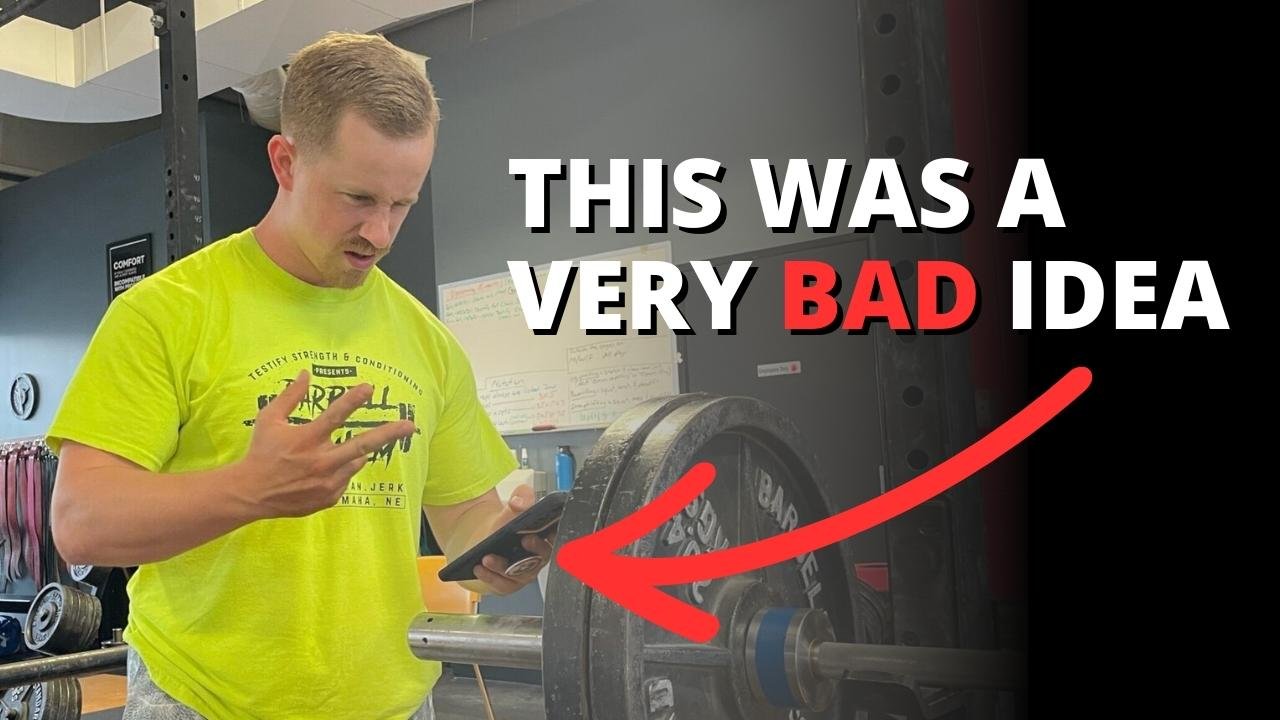Why do I Keep FAILING?!
/Are you missing reps on your linear progression? Let’s address one potential problem, and it’s one that’s easy to fix.
Specifically, let’s talk about rest periods (i.e., how long you’re resting between sets). I know - not very exciting. However, rest periods are important because they can either support your training, or - if chosen poorly - they can derail your training.
When someone starts training with us here at Testify, we have a conversation on day one wherein we discuss rest periods, and during this conversation, we address two things:
1. Resting Between Warm-up Sets
The short version? You don’t need to do it. That’s right. Don’t rest between warm-up sets. The act of changing your weights will provide enough rest while you're warming up. These are warm-up weights and don’t require much of a break between sets. You are welcome to rest several minutes, but most people don’t have all day to train, and this is the place to save time in the workout.
One caveat - you’ll probably want to rest a few minutes after your last warm-up set, i.e., before your first work set, which brings us to . . .
2. Resting Between Work Sets
You definitely want to rest between work sets. When you’re getting started with the Starting Strength linear progression, somewhere between three and five minutes will probably suffice. Treat that range as a minimum.
Want to squat 225 lb like Sarah? be sure to rest long enough between your work sets.
Remember that the purpose of strength training is - not surprisingly - to get stronger. To get stronger, you need to do the prescribed training for the day - you need to lift what you said you were going to lift - and to lift that weight, you need to rest enough to complete all the reps of your work sets.
The Main Point
That last part is the main point - rest long enough to ensure that you complete the next set successfully. When you read “three to five minutes,” remind yourself that this is appropriate for when you’re starting out, and also remind yourself that this is a minimum. When things get heavier and more challenging, there will come a time when you need to rest longer - you’ll rest six minutes, seven minutes, etc.
Establish the Habit
One of the most enjoyable parts of lifting weights is . . . not lifting weights, so force yourself to get used to resting - even at the beginning of your strength training journey.
If it’s your second workout, take the three, four, or five minute break even if you know you could get back under the bar and complete the next set with a shorter rest break. Start establishing the habit of getting adequate rest right away in your training. If you tend to rush things, a timer can be a handy tool to ensure that you’re waiting long enough before starting your next set.
Practical Limitations
There are, of course, some practical limitations to how long you’ll actually rest, and you’ll notice that I’m not suggesting that you rest 15 minutes between sets. Even if a 10-15 minute rest period might be useful, it simply may not be practical in terms of your schedule for the day.
Wrapping Up
In general, though, rest long enough to ensure that you can complete the next set. Completing your work sets will allow you to get stronger, and in this way, you will still be making progress on your linear progression four months, five months, or even six months into it instead of missing reps in the first or second month.
It may help to remember that this isn’t conditioning; of course, there will still be a conditioning benefit, but that’s not why you’re strength training. You’re doing it to get stronger, so take the appropriate rest, and as always, we hope this helps you get stronger and live better.
(Some links may be affiliate links. As an Amazon Associate, Testify earns from qualifying purchases.)




